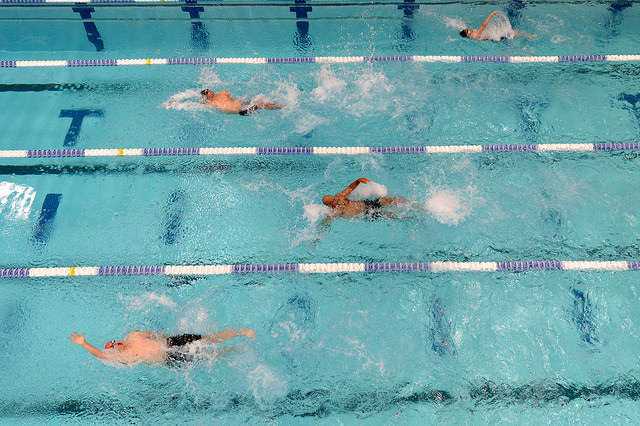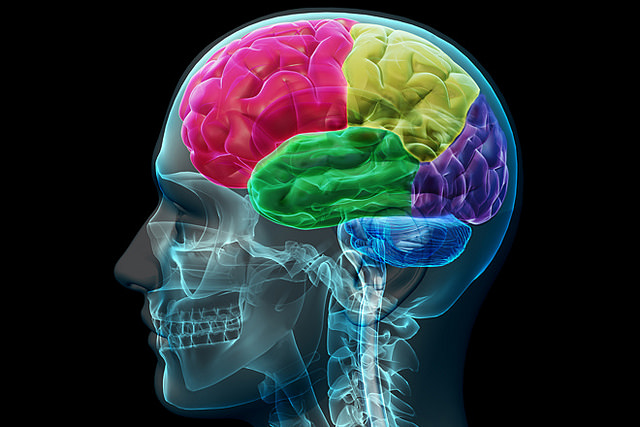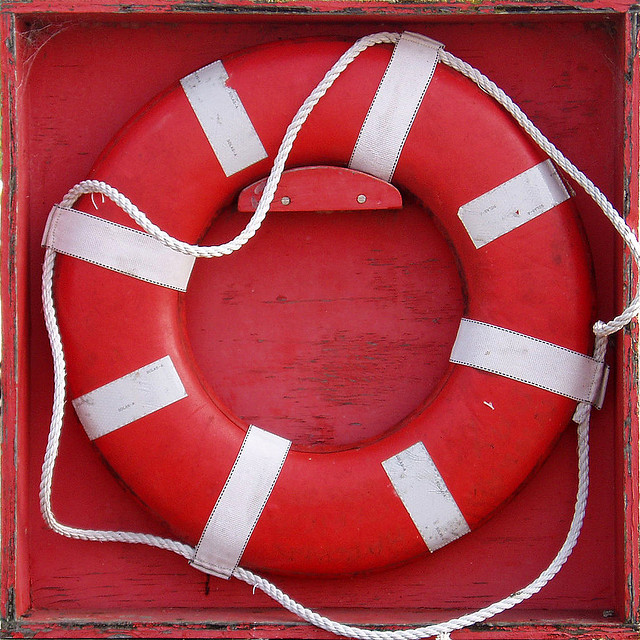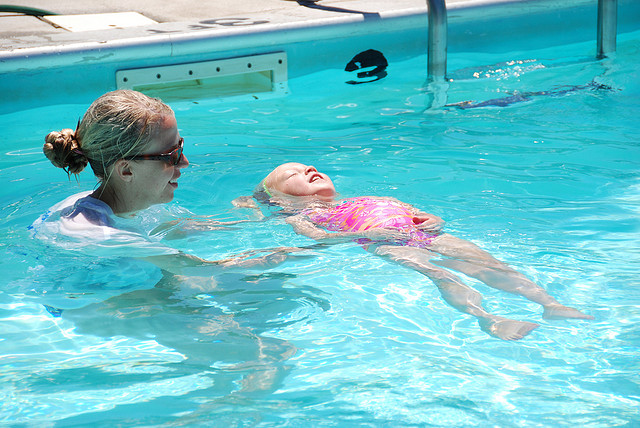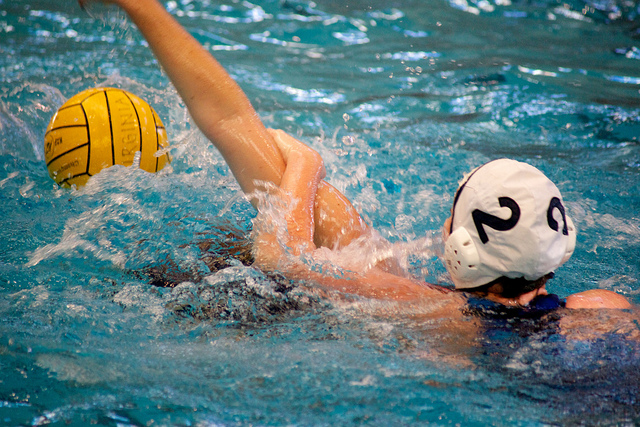Swimming and the Fight Against Childhood Obesity: How Diving In Can Keep Your Child Healthy
Category : Uncategorized
Table of Contents
Overview
Common Misconceptions about Childhood Obesity
Benefits of Swimming for Kids
How to Dive In
Childhood obesity is a major concern for parents and physicians throughout the U.S. The growing prevalence of overweight children is undeniable. Over the past 30 years, according to the Centers for Disease Control and Prevention, childhood obesity has doubled in children and quadrupled in adolescents.
Of course, the health risks of the disease in children can be devastating. In fact, Mayo Clinic explains that a result of obesity is the earlier onset of “adult” diseases, such as diabetes and high blood pressure.
Via Flickr – by DoD News Features
What can parents do to prevent their kids from falling victim to this disease? Healthy eating habits and an active lifestyle are essential. When considering ways to keep your child active, swimming is a great option. Not only is it fun—most children love playing in the pool—it’s a great all-around workout, one that benefits almost every aspect of your child’s health.
Read on to learn more about obesity and how swimming will help your child live a healthy, happy life.
Common Misconceptions about Childhood Obesity
As of 2012, notes the CDC, more than 30 percent of children and adolescents were overweight or obese. It is imperative that the childhood obesity epidemic be curbed. One essential step in ending the epidemic is addressing the misinformation that exists about the disease. Here are a few misconceptions that parents should know:
The parents are to blame. Parents do contribute to some food choices made by their kids, but it’s important to remember that they often have little say in what their children eat while at school, with friends, or at other activities outside the home.
The best course of action for parents is to arm their children with healthy eating knowledge. Provide healthy, well-balanced meals at home and encourage your children to make the right choices when they aren’t with you.
Your child will “grow into” the extra weight. It is a common misconception that overweight or obese children will lose or grow into their “baby fat” as they get older. Physicians on HealthyChildren.org warn that without a change in eating habits or activity levels a child could continue to gain weight over time.
Via Flickr – by thebittenword.com
Obese children need to go on a diet. Dieting for children can have negative side effects. When children diet, there is a risk that they won’t take in the amount of vitamins and nutrients they need to properly grow and develop. Dieting at an early age can also cause children to develop a negative body image. It’s best to work with your child’s physician to develop more nutritious eating habits.
It’s genetic, and therefore, it can’t be prevented. While it has been shown that genetics can contribute to obesity, it’s important that parents understand any hereditary factor can be diminished through a healthy lifestyle.
If obesity runs in your family, your child isn’t doomed to becoming obese. With healthy eating habits and the right amount of activity, they can maintain a healthy weight.
Fast food is the cause. Eating fast food regularly can certainly be problematic, but blaming these high fat, high calorie foods for a child’s obesity misses the target. The bigger concern is that the child is regularly taking in too many calories. A more balanced diet that provides the right number of calories for your child’s gender and age group is the answer. WebMD provides a chart with estimated calorie requirements for children and adults.
Via Flickr – by SteFou!
“Clean your plate” promotes healthy eating habits. The Institute of Medicine explains that a better approach is to help your child learn self-regulation. This can be done by providing nutritious food options and allowing the child to decide how much they’ll eat.
Drinking large amounts of soda is to blame. Soda can certainly be a contributing factor, but it’s unlikely that it alone has caused a child’s obesity. Most of the time, it is just one of several causes, in addition to bad eating habits and inactivity.
Via Flickr — by dcJohn
Obese kids are lazy. Sedentary living—watching too much TV or spending long periods playing video games—can easily become habit for young people. All children, regardless of their weight, should be motivated by parents, teachers, and other adults to be active and get plenty of exercise.
My child is just big boned. Everyone is built differently, and a child’s bone structure can certainly contribute to their appearance. However, being “big-boned” is not an appropriate explanation for being obese. To find out if your child has a healthy BMI, try WebMD’s “Fit Kids BMI Calculator.”
Movement, whether it comes from playing a sport, spending time on the playground, or taking part in a physical activity such as swimming, is essential for all children. An article from the National Institute on Out-of-School Time clarifies why movement matters for kids. The organization notes that it “enhances fitness, fosters growth and development, and helps teach them about their world.”
For parents seeking ways to keep their children active, swimming is a great choice. First off, any child can do it. You don’t need to be naturally athletic to swim laps or play a game in the pool. And second, it has a vast number of positive wellness effects for kids—and they aren’t limited to physical benefits. Being in the water is great for a child’s overall health. Read on to learn more from the list of benefits presented below:
It promotes heart and lung health. In addition to strengthening muscles, swimming is great for kids because it makes their heart and lungs stronger as well. A strong cardiovascular system means better health as they grow.
Via Flickr – by Allan Ajifo
It improves mental and emotional health. Swimming will certainly improve your child’s physical health, but it can also have positive benefits on their mental health. LiveStrong.com explains that the buoyancy of the water promotes relaxation and can lead to improvements in emotional health.
It is great for strength-building and balance. Swimming works all of the muscle groups, and as result, according to Johnston UNC Health Care, it leads to stronger muscles, better balance, and improved posture.
It is easier for overweight children than other forms of exercise. The buoyancy in water can make movement easier for some children compared to activities outside the water. It is also easier on their joints.
It is better for asthmatic children. Because swimming strengthens breathing muscles, notes a recent article in MedicineNet.com, it is a great exercise for those with asthma. The humid air found at many indoor pools can also help ward off attacks.
Via Flickr — by emdot
It plays an important role in keeping your child safe. Swimming has many great health benefits, but it is also an important safety skill. According to the CDC, drowning is the second leading cause of death among children ages 1-14. When your child knows how to swim, you can reduce their risk of drowning.
It aids in early development. ScienceDaily reports that researchers from Griffith Institute for Educational Research found that learning to swim at a young age contributed to reaching developmental milestones, including visual-motor and mathematics-related skills, sooner.
There are a number of great ways to make swimming a part of your child’s life. Whether you’re seeking information on lessons or looking for new water activities to spice up your child’s routine, the tips below can help:
Schedule swim lessons. Parents can begin getting their kids used to the water before their children have turned one. Lessons can begin as early as 3 years of age. If your child is wary of the water, consider looking into a class where parents can be in the water with their children.
Via Flickr — by Philms
Join a kids’ swim team. USASwimming.org recommends checking out your local recreation centers, country clubs and school teams to get your child involved in competitive swimming. Being on a team is a fun way to improve your child’s fitness.
Address fears. Not every child is going to be willing to jump right in when it comes to swimming. ParentMap.com provides a few helpful suggestions on how to help a child that is afraid of the water. It stresses the importance of acknowledging the fear and then finding ways to ease the child into being in the water—for example, spend some time with them sitting on the side of the pool just dangling your feet in the water. Then, be sure to make every pool experience fun. Once your child is having a good time, their fears will subside.
Research the swim locations in your area. U.S. Masters Swimming offers a locator that allows you to enter your address or City, State to find pools in your area. Of course, there are many places to swim other than pools. To find a natural swimming location in your area, try this locator.
Via Flickr – by tata_aka_T
Play pool games. The great thing about being in the water is that your kids get exercise without it feeling like exercise. Pool games—like Marco Polo, Categories, and Sharks and Minnows—are great ways keep swim sessions fun for your kids.
Have birthday pool parties. Having a birthday party at a local pool can be a great way to keep your kids active as they celebrate. And pool parties aren’t only for children with summer birthdays. If your child’s birthday is in a cooler month, check with local indoor pools, such as the YMCA, to schedule a party.
Help self-conscious kids. Some children may feel especially self-conscious at the pool and this can be a difficult subject for parents to tackle. PsychologyToday.com presents an article with a solution that might surprise some parents: be aware of how you feel about yourself. The article notes that parents can unknowingly pass their own insecurities on to their children. If you’re critical of your own weight, intelligence, or another factor, your children may develop similar insecurities.
Join Boy or Girls Scouts. The Boy Scout and Girl Scout programs both have skills badges connected to learning swimming skills:
These programs are great because not only do they promote strengthened swimming skills, they also teach children about water rescue and other water safety skills.
Try summer camp. There are many “camp”-style programs that encourage time in the water. Sleep-away camps often involve swimming regularly and local recreational centers, like the YMCA, host swim camps.
Via Flickr – by Karen Blaha
Get involved in a team-based water sport. Keep in mind that competitive swimming isn’t limited to racing. Team sports, such as water polo or synchronized swimming, are other great ways to keep your child in the pool regularly.

